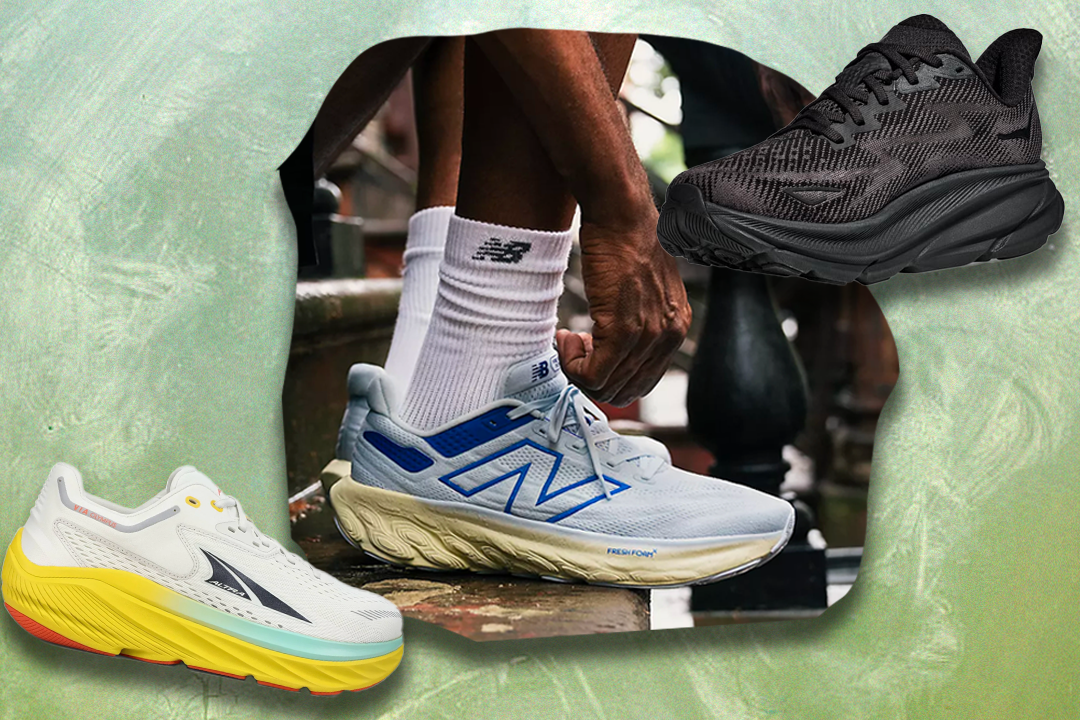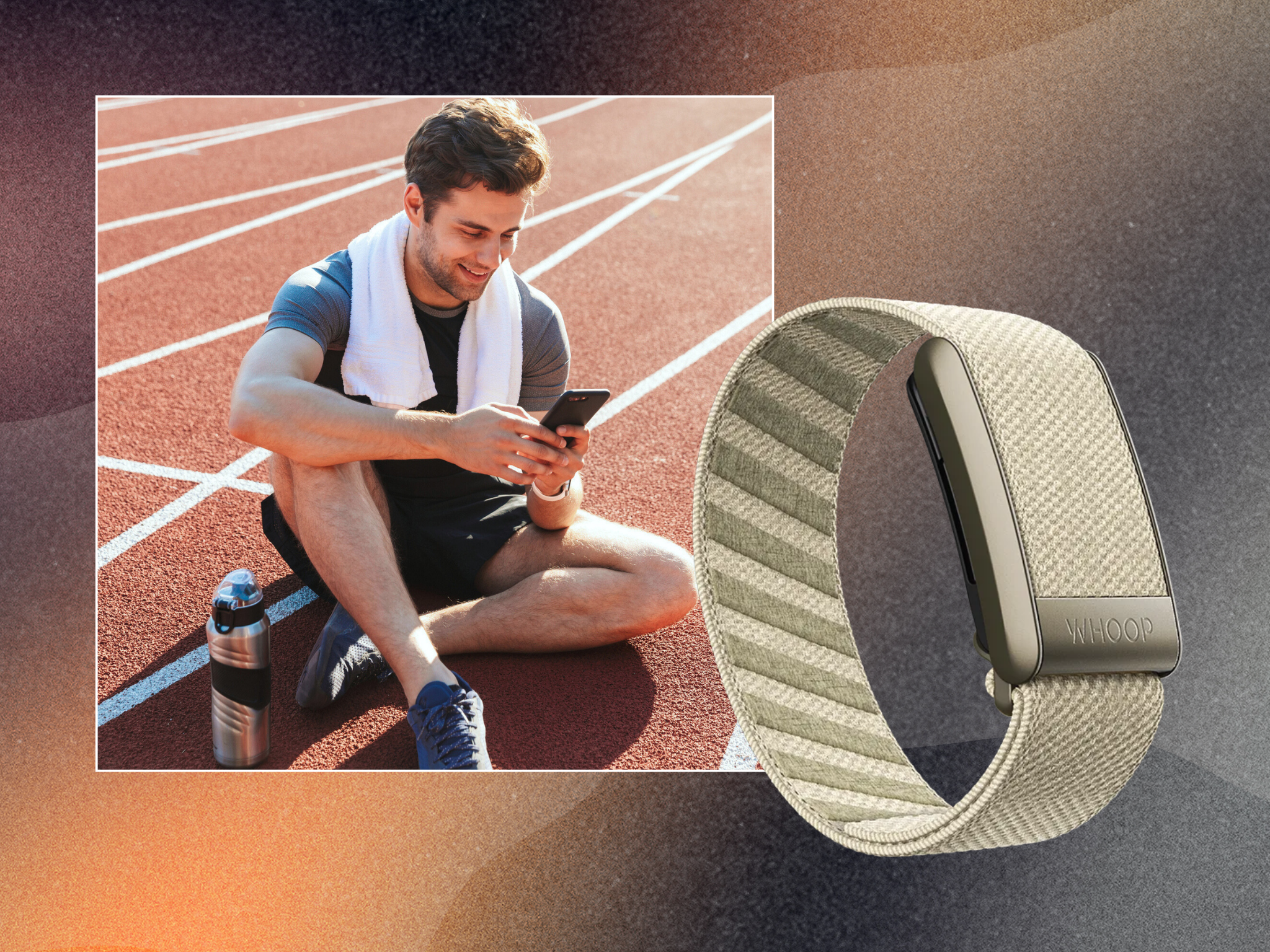Whoop 4.0 fitness tracker

- Best: Detailed health insights
- Why we love it
- Lightweight and comfortable to wear
- Detailed data insights
- Offers actionable feedback
- Measures a range of biometrics
- Community in the app
- Take note
- Strap isn’t waterproof
- App needs to be constantly open
- Must be used with the app on your phon
Whoop describes itself as a “human performance company” and its core purpose isn’t to show you your emails or the time. It has one job, and that job is to show you how to perfectly balance your energy levels, rest quality and exertion based on your particular lifestyle, health level and body. With that said, I did keep looking at my wrist for some kind of feedback and then remembering that I had to pick up my phone and go into the app to check my scores. This is no doubt because I’m used to using an Apple Watch and I have to admit, I do like a tracker with a face – it felt a little strange wearing something that was just a band.
The Apple Watch has been a good companion, encouraging me to hit my step, stand and sleep goals and I always liked the simplicity of the targets it sets – close the rings, gold star for you. However, Whoop’s insights are slightly more detailed. The photodiodes on the underside of the strap stay pressed against your skin and track heart activity and breathing patterns to create intelligent algorithms which then provide a daily score for sleep, strain and recovery.
After tracking for a few days, the app shows you graphs and targets based on your behaviour and other body metrics. Within a few days, I could see how much energy I was using, versus how much I should be using based on how much rest I’d actually had, how much sleep debt I was in and how hard I should be pushing my body the next day. It was all very in-depth and it felt like I had a coach with me 24 hours a day.
I learned that my bedtime should actually be much earlier – something I am still in denial about – and that to feel totally rested for my level of exercise and exertion, I should be toting up a couple more hours of solid rest a night. Some days I managed to hit the perfect balance of rest and strain, but on others, the app informed me that I should take it easier to avoid exhaustion.
What I loved about the strain monitor the most was the diversity of exercises listed in the app. You can choose anything from Barry’s and interval training to yoga and cycling for a more accurate reading of how you’ve moved your body and also select options such as walking, carrying a toddler and doing housework. My graphs showed me how much I should be working out and resting for optimal performance and how close I was to reaching my goals with a percentage score, which made the insights much easier to follow.
Of course, the app also showed the classic markers that many other fitness apps offer, including calories burned and steps taken but there was so much more to the data. I can totally see why biohacking nerds favour the Whoop and why it’s easy to become slightly obsessed with your insights.
Obviously, the more people that use Whoop, the more people who will contribute to the health data the app gathers, which is also useful for setting a baseline for different body types and lifestyles. My app told me that for someone of my height and build, with my particular lifestyle, I was reaching about 84 per cent of my goals compared with other people like me using the app. This insight is obviously great if you love a bit of healthy competition, however, there are other benefits to this level of data being gathered.
Pregnant women using the app have contributed to new research and data on women’s health that we’ve never had before and Ahmed has stated that he’s now working with the app’s data science team to optimise the insights that Whoop can offer so that the band can make more intelligent suggestions. If the Whoop could tell you when to rest and when you’re able to exert yourself during pregnancy that’s great, but if it could predict your exact due date, that could also be incredibly useful for the later stages of your pregnancy.
I found myself checking the app much more than I’d usually look at my Apple Watch or Oura app and feeling a little guilty when I wasn’t giving myself enough rest. The irony of this kind of competitive wellness is that I was essentially being peer pressured into sleeping more and being kinder to myself – things you might not typically associate with a community of incredibly driven and puritanical fitness fanatics. But that’s wellness for you. Over the years it’s become a far more accessible and welcoming space and I found myself in groups with women who were clearly professional athletes and people who seemed to be just starting out on their health journeys.
How’s Whoop 4.0 different?
The brand says the 4.0 is 33 per cent smaller than its predecessor, with upgraded sensors so it can detect your heart rate far more accurately. Where fitness trackers are concerned, I’m not a fan of wearing something clunky or heavy on my wrist and the device did feel light with a softer band that didn’t feel uncomfortable or weigh me down.
The smaller size is slightly more comfortable but there’s another reason it’s been slimmed down – the launch of the brand’s new clothing range, Whoop body. The range has pockets specially sized for the new unit, which means you can now wear your 4.0 somewhere other than on your wrist. Arguably, this is a good development because many sports scientists say that the wrist is not the optimal place to measure heart rate. Now, you can use the range to store your 4.0 on your torso, waist or calf.
Or, if you want to follow Olympic gold medalist Tom Daley’s advice and fancy something a little different: “You can just slip the 4.0 device into your boxers and you’ll get all the same data and information.”
The recharging pod is also much smaller and waterproof up to 1m – so it doesn’t matter if you accidentally jump in the shower with it on. However, I did forget to take mine off once and because the band is a knitted fabric, it’s not waterproof so it did feel a little squelchy and unpleasant on my wrist afterwards. Following that experience, I opted to take the band off when I showered and when I took a dip in the pool during a spa weekend.
Even with the decrease in size, the 4.0 still has the same five-day battery life as its predecessor, the 3.0. I found I needed to charge twice a week so the claim stood up. The 4.0 also has an alarm, which can wake you up with a gentle vibration, either at the set time you decide or after the recommended amount of sleep that the app says you need that day according to your lifestyle. I set fixed timers for the week and let the app calculate my wake-up time during the weekend.
The 4.0 also measures skin temperature and blood oxygen saturation. Low levels of blood oxygen could potentially indicate health problems – see dehydration if you’re working out or training hard during this mini heatwave.
Does it look good?
The new superknit bands (£44, Whoop.com) feel a lot softer than the previous straps and they come in a range of colours, with different coloured hardware. Black seems to be the default among most users, but personally? I love having the ability to match the strap and the buckle colour to my outfit. It’s a little touch that raises the game and is the reason I opted for a gold-toned Apple Watch and gold Oura Ring. Sure, black is sporty but I like having chicer options too.
The 4.0 also boasts a new slider system, which makes it easier than ever to swap your 4.0 between different bands. There are plenty to choose from so if you’re worried your Whoop will clash with your outfit, you won’t have to choose between a particular look and a break in your data. I trialled the black strap for a week and then switched it out for the stone-coloured superknit band which was a much better fit for my personal style – I love my neutrals.
How much does it cost?
For existing users, the new unit is free of charge. You can upgrade easily through your app and simply wait for it to arrive in the post.
If you’re new to Whoop, there’s one thing to keep in mind. You don’t buy Whoop; you become a member. The brand’s subscription model requires users to sign up for at least six months at £27 per month – with the price decreasing if you subscribe for longer. A 24-month subscription is the best value. Once you’re signed up, the strap comes free.
It’s a financial commitment, but with more features and data offered than ever before, it could be worth it for you based on your health, sleep and wellbeing goals. The app acts as your personal coach, there are community groups in there to join where you can connect with other Whoop members and you can access videos that explain each health metric and different training styles, rest tips and sleep advice.
If you want to give Whoop body a go too, garments range from £49 to £94.






